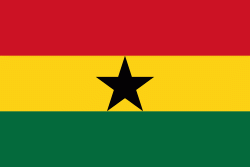Asunafo North Municipal District (Asunafo North)
 |
Asunafo North Municipal District is one of the 260 Metropolitan, Municipal and District Assemblies (MMDAs) in Ghana, and forms part of the 6 Municipalities and Districts in the Ahafo Region. It was one of the first Districts created in the then Brong-Ahafo Region dating back as far as 1912.
Asunafo North Municipal District lies between latitudes 6°27°N and 7.00°N and longitudes 2°52°W and shares common boundaries with Asutifi South District in the north east, Dormaa Central Municipal on the north west and Juaboso District and Sefwi-Wiaso Municipal in Western North Region on the west-south borders, and Asunafo South District in the Ahafo Region on the south-eastern borders.
The total land size of the Municipality is 1093.7 km2 with 389.7 km2 covered by forest reserves. The population of the Municipality according to 2010 population and housing census stands at 124,685 with 62,854 males and 61,831 females.
Map - Asunafo North Municipal District (Asunafo North)
Map
Country - Ghana
 |
 |
| Flag of Ghana | |
The Bono state existed in the area that is modern day Ghana during the 11th century. Kingdoms and empires such as Kingdom of Dagbon in the north and the Ashanti Empire in the south emerged over the centuries. Beginning in the 15th century, the Portuguese Empire, followed by other European powers, contested the area for trading rights, until the British ultimately established control of the coast by the 19th century. Following over a century of colonial resistance, the current borders of the country took shape, encompassing 4 separate British colonial territories: Gold Coast, Ashanti, the Northern Territories, and British Togoland. These were unified as an independent dominion within the Commonwealth of Nations. On 6th March 1957, Ghana became the first country in Sub-Saharan Africa to achieve sovereignty. Ghana subsequently became influential in decolonisation efforts and the Pan-African movement.
Currency / Language
| ISO | Currency | Symbol | Significant figures |
|---|---|---|---|
| GHS | Ghanaian cedi | ₵ | 2 |
| ISO | Language |
|---|---|
| AK | Akan language |
| EN | English language |
| EE | Ewe language |
| TW | Twi |















